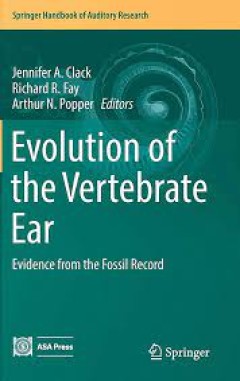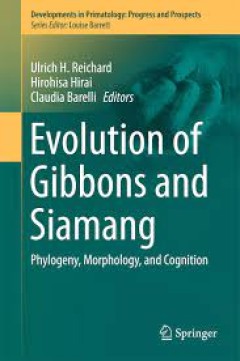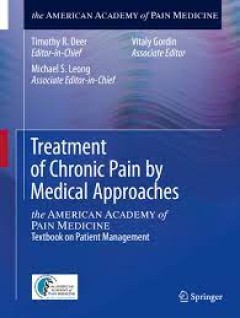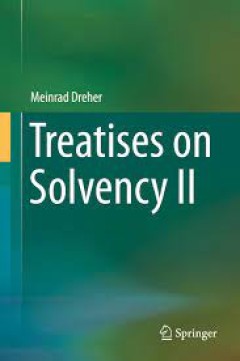Filter by

Evolution of the Vertebrate Ear Evidence from the Fossil Record
The evolution of vertebrate hearing is of considerable interest in the hearing community. However, there has never been a volume that has focused on the paleontological evidence for the evolution of hearing and the ear, especially from the perspective of some of the leading paleontologists and evolutionary biologists in the world. Thus, this volume is totally unique, and takes a perspective t…
- Edition
- -
- ISBN/ISSN
- 978-3-319-46661-3
- Collation
- 64 b/w illustrations, 52 illustrations in colour
- Series Title
- -
- Call Number
- -

Mitochondrial Mechanisms of Degeneration and Repair in Parkinson's Disease
- Edition
- 1
- ISBN/ISSN
- 978-3-319-42137-7
- Collation
- XII, 275
- Series Title
- -
- Call Number
- -
- Edition
- 1
- ISBN/ISSN
- 978-3-319-42137-7
- Collation
- XII, 275
- Series Title
- -
- Call Number
- -

Multiparty Elections in Authoritarian Regimes
Susanne Michalik analyzes why authoritarian regimes allow for multiparty elections and how they affect political outcomes. Even though their introduction rarely leads to a change in power, such elections should not be regarded as mere window-dressing. She argues that competitive elections are installed to deal with a split among the incumbent elite and to facilitate the formation of a new rulin…
- Edition
- 1
- ISBN/ISSN
- 978-3-658-09510-9
- Collation
- XII, 148
- Series Title
- Studien zur Neuen Politischen Ökonomie
- Call Number
- -

Evolution of Gibbons and Siamang Phylogeny, Morphology, and Cognition
This volume provides insight into gibbon diet and community ecology, the mating system and reproduction, and conservation biology, all topics which represent areas of substantial progress in understanding socio-ecological flexibility and conservation needs of the hylobatid family. This work analyzes hylobatid evolution by synthesizing recent and ongoing studies of molecular phylogeny, morpholog…
- Edition
- -
- ISBN/ISSN
- 978-1-4939-5614-2
- Collation
- 42 b/w illustrations, 18 illustrations in colour
- Series Title
- -
- Call Number
- -

Bat Bioacoustics
Arguably biosonar is one of the ‘eye-opening’ discoveries about animal behavior and the auditory systems of echolocators are front and center in this story. Echolocation by bats has proven to be a virtual gold mine for colleagues studying neurobiology, while providing many rich examples of its impact on other areas of bats’ lives. In this volume we briefly review the history of the topi…
- Edition
- -
- ISBN/ISSN
- 978-1-4939-3527-7
- Collation
- XVI, 304
- Series Title
- -
- Call Number
- 612.8

Treatment of Pulmonary Hypertension
Presents highly practical information, written in a quick-access, no-nonsense format Emphasis is on a just-the-facts clinical approach, heavy on tabular material, light on dense prose Involvement of the ISCP will ensure that the best quality contributors will be involved and establish a consistent approach to each topic in the series?
- Edition
- 1
- ISBN/ISSN
- 978-3-319-13581-6
- Collation
- VII, 182
- Series Title
- Current Cardiovascular Therapy
- Call Number
- -

Treatment of Peritoneal Surface Malignancies State of the Art and Perspectives
Provides up-to-date descriptions of treatments and treatment outcomes Focuses especially on integrated treatments Will aid surgeons, oncologists, gynecologists, pathologists, and residents in daily clinical practice and research Includes numerous high quality illustrations and tables
- Edition
- 1
- ISBN/ISSN
- 978-88-470-5711-1
- Collation
- 2 b/w illustrations, 52 illustrations in colour
- Series Title
- Updates in Surgery
- Call Number
- -

Treatment of Chronic Pain by Medical Approaches the AMERICAN ACADEMY of PAIN …
From reviews of Deer, eds., Comprehensive Treatment of Chronic Pain by Medical, Interventional, and Integrative Approaches: "Comprehensive Treatment of Chronic Pain by Medical, Interventional, and Integrative Approaches is a major textbook... [I]t should be a part of all departmental libraries and in the reference collection of pain fellows and pain practitioners. In fact, this text could …
- Edition
- -
- ISBN/ISSN
- 978-1-4939-1818-8
- Collation
- 26 b/w illustrations, 21 illustrations in colour
- Series Title
- -
- Call Number
- -

Models of Wave Memory
This monograph examines in detail models of neural systems described by delay-differential equations. Each element of the medium (neuron) is an oscillator that generates, in standalone mode, short impulses also known as spikes. The book discusses models of synaptic interaction between neurons, which lead to complex oscillatory modes in the system. In addition, it presents a solution to the prob…
- Edition
- 1
- ISBN/ISSN
- 978-3-319-19865-1
- Collation
- xxviii, 239
- Series Title
- Lecture Notes in Morphogenesis
- Call Number
- -

Treatises on Solvency II
The European system of insurance supervision under Solvency II constitutes a parallel to supervision of credit institutions under Basel III. At the heart of this new European insurance supervisory regime are the Solvency II Directive, the attendant regulation, and the EIOPA Regulation. The present volume, "Treatises on Solvency II", includes articles on the bases of European insurance supervisi…
- Edition
- 1
- ISBN/ISSN
- 978-3-662-51567-9
- Collation
- XXI, 478
- Series Title
- -
- Call Number
- -
 Computer Science, Information & General Works
Computer Science, Information & General Works  Philosophy & Psychology
Philosophy & Psychology  Religion
Religion  Social Sciences
Social Sciences  Language
Language  Pure Science
Pure Science  Applied Sciences
Applied Sciences  Art & Recreation
Art & Recreation  Literature
Literature  History & Geography
History & Geography